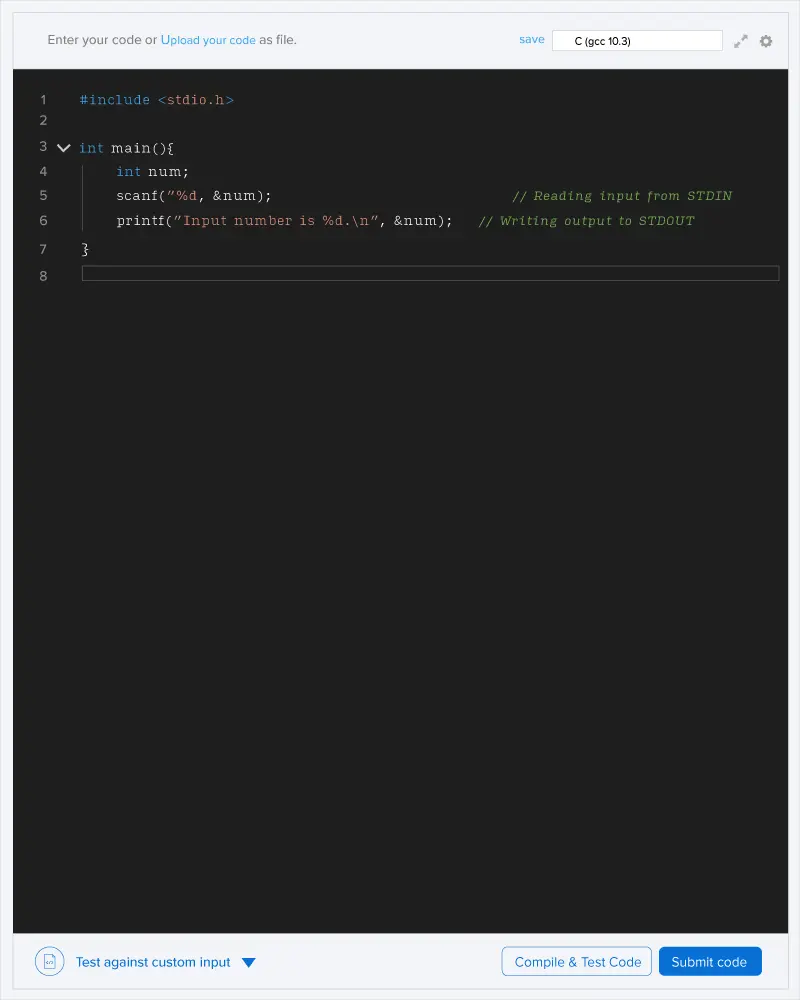A bracket is considered to be any one of the following characters: ( , ) , { , } , [ , or ] .
Two brackets are considered to be a matched pair if the an opening bracket (i.e., ( , [ , or { ) occurs to the left of a closing bracket (i.e., ) , ] , or } ) of the exact same type . There are three types of matched pairs of brackets: [] , {} , and () .
A matching pair of brackets is not balanced if the set of brackets it encloses are not matched. For example, {[(])} is not balanced because the contents in between { and } are not balanced. The pair of square brackets encloses a single, unbalanced opening bracket, ( , and the pair of parentheses encloses a single, unbalanced closing square bracket, ] .
By this logic, we say a sequence of brackets is balanced if the following conditions are met:
1) It contains no unmatched brackets.
2) The subset of brackets enclosed within the confines of a matched pair of brackets is also a matched pair of brackets.
Given n strings of brackets, determine whether each sequence of brackets is balanced. If a string is balanced, return YES . Otherwise, return NO .
Input Format:
The first line contains a single integer n, the number of strings.
Each of the next n lines contains a single string s, a sequence of brackets.
Output Format:
For each string, return YES or NO .
Constraints:
1 <= n <= 103
1 < |s| <= 103 , where |s| is the length of the sequence.
All chracters in the sequences ∈ { {, }, (, ), [, ] }.
Sample Input:
3
{
[()]}
{[(])}
{{[[(())]]}}
Sample Output:
YES
NO
YES
Explanation:
1. The string {[()]} meets both criteria for being a balanced string, so we print YES on a new line.
2. The string {[(])} is not balanced because the brackets enclosed by the matched pair { and } are
not balanced: [(]) .
3. The string {{[[(())]]}} meets both criteria for being a balanced string, so we print YES on a new line.

